Sensory Integration Therapy & Autism

An Overview of Sensory Processing in Autism Spectrum Disorder
Autism Spectrum Disorder (ASD) often involves significant sensory processing challenges that impact everyday behavior, communication, and social interaction. These challenges include hypersensitivity, hyposensitivity, and difficulties in integrating sensory inputs from multiple modalities. This article explores the evolution, techniques, and clinical evidence surrounding sensory integration therapy (SIT) as a tailored intervention for children with autism, highlighting its goals, methods, and current research findings.
Main Sensory Processing Challenges in Autism
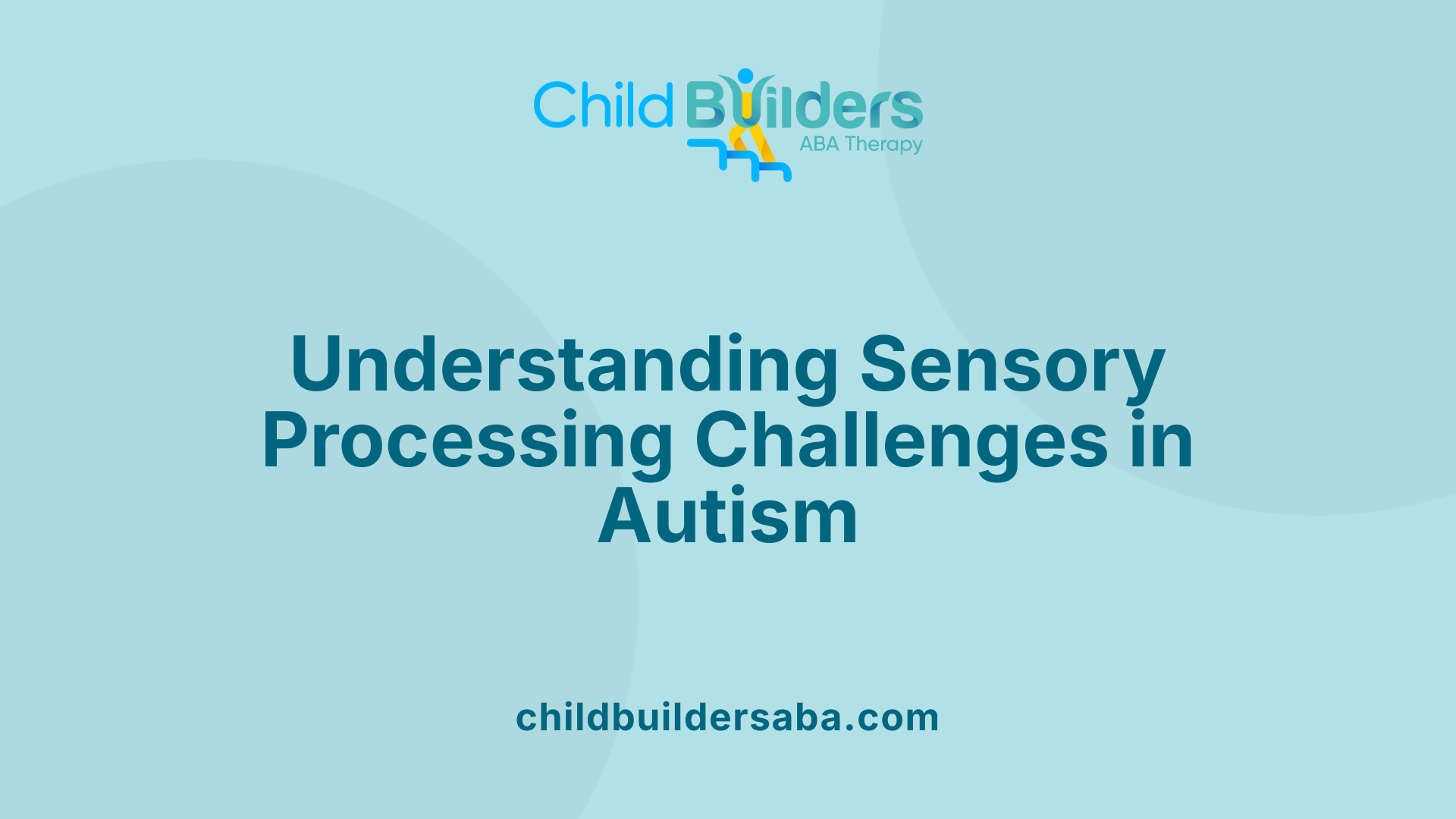
What are the main sensory processing challenges faced by individuals with autism?
Children and adults with autism often encounter significant difficulties in how their brains process sensory information. These challenges include hypersensitivity, where individual responses to sensory stimuli like noise, touch, or bright lights are exaggerated, and hyposensitivity, where responses are diminished or absent.
These sensory differences span various senses, such as sight, sound, smell, taste, touch, balance, and proprioception—the sense of body position. For example, an autistic person might become overwhelmed by loud sounds or bright lights, leading to sensory overload. This overload can manifest as meltdowns, withdrawal, agitation, or distress, especially in chaotic or highly stimulating environments.
Conversely, some individuals may seek sensory experiences, engaging in behaviors like mouthing objects, seeking loud noises, or excessive movement to fulfill their unmet sensory needs. Such behaviors are often attempts to self-regulate and cope with sensory processing difficulties.
Underlying these challenges are neurological factors, including atypical neural connectivity and problems with sensory gating—the brain's ability to filter out irrelevant stimuli. These issues impair the brain’s capacity to filter, interpret, and respond appropriately to sensory information.
The impact of these sensory processing differences extends to daily life, affecting communication, social interactions, learning, and behavior. Environmental modifications, such as reducing noise or providing sensory-friendly spaces, as well as targeted therapies like sensory integration interventions, help manage these difficulties. Overall, sensory processing challenges are a core feature of autism, requiring tailored strategies to improve quality of life and functional independence.
| Sensory Issue | Description | Effect on Daily Life | Support Strategies |
|---|---|---|---|
| Hypersensitivity (Over-responsiveness) | Exaggerated responses to sensory stimuli like loud sounds, bright lights, or touch. | Meltdowns, avoidance, irritability. | Environment adjustments, calming techniques, therapy. |
| Hyposensitivity (Under-responsiveness) | Diminished or delayed responses to sensory input. | Self-stimulatory behaviors, seeking intense stimuli. | Sensory diets, engaging activities, occupational therapy. |
| Sensory Overload | Excessive sensory input resulting in distress or shutdown. | Withdrawal, emotional outbursts. | sensory rooms, noise-canceling headphones, routines. |
| Sensory-Seeking Behaviors | Behaviors aimed at getting more sensory input, such as jumping or spinning. | Increased activity levels, difficulty calming down. | Structured sensory activities, physical input. |
Understanding these sensory processing challenges is crucial for supporting individuals with autism. Tailored interventions and environmental adaptations can significantly improve their daily functioning and well-being.
The Foundation and Development of Sensory Integration Therapy
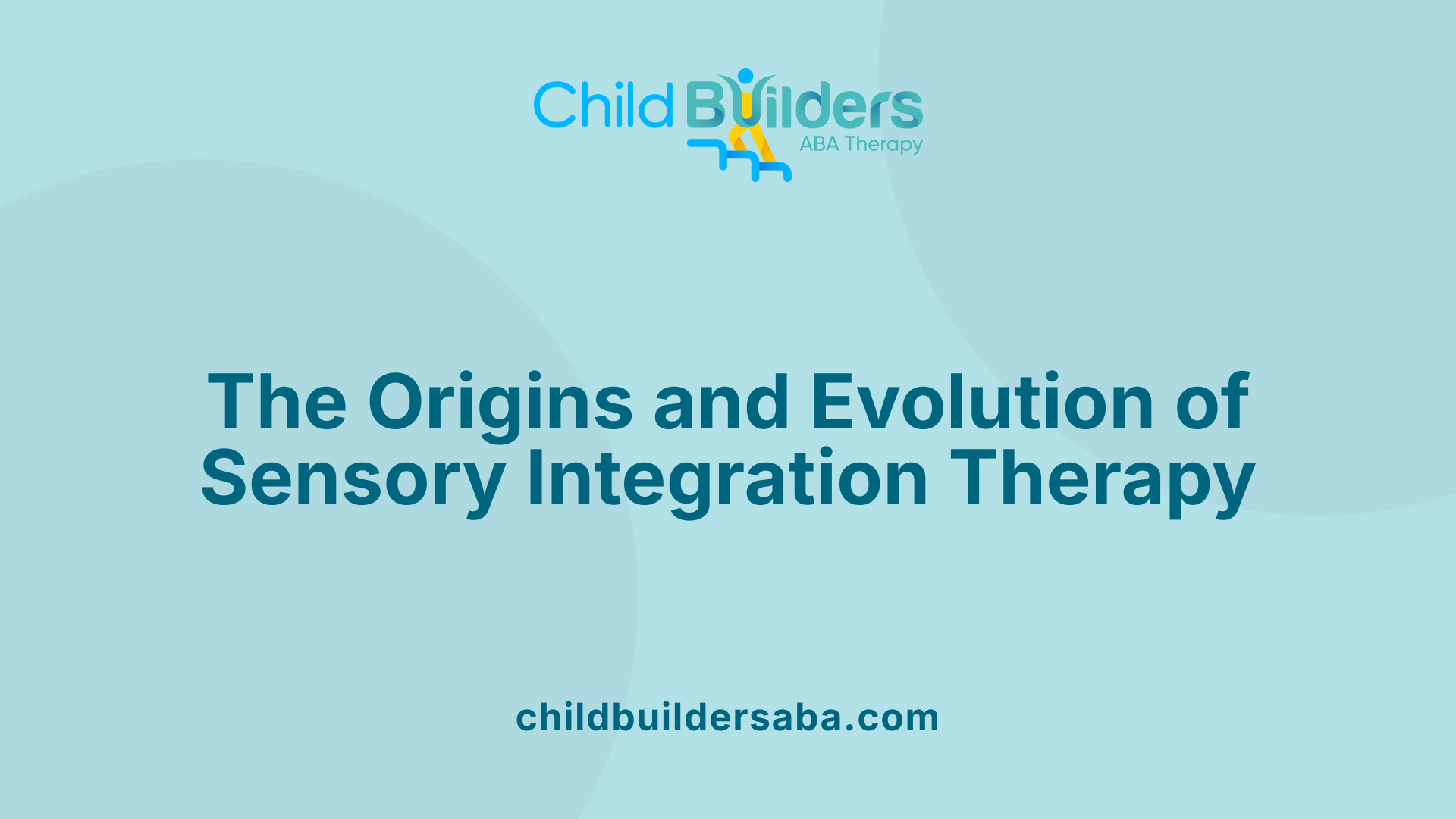
How did sensory integration therapy develop and what are its origins?
Sensory integration therapy began in the 1970s, developed by occupational therapist A. Jean Ayres. Her work was based on her own Sensory Integration Theory, which she formulated during the 1950s and 1960s. Ayres’s background in neuroscience and psychology heavily influenced her approach.
In 1972, Ayres published Sensory Integration and Learning Disorders, which detailed her methods for assessing and treating sensory integration dysfunction—now often called Sensory Processing Disorder. Her goal was to enhance the neurological organization of sensory input so that children could better process information and improve their learning, behavior, and daily activities.
The therapy focuses on stimulating and integrating tactile, vestibular, and proprioceptive senses through play-based activities. These activities, such as swinging, bouncing, or crawling, aim to help children better interpret sensory information.
Since its inception, sensory integration therapy has evolved, with ongoing clinical research supporting its principles. A significant development was the establishment of fidelity measures in 2007, ensuring consistency and quality of therapy delivery.
Today, Ayres’s foundational work remains influential, providing both a theoretical basis and practical protocols for the therapy. It has grown into an evidence-based practice employed worldwide, especially for children with autism and sensory processing challenges.
| Aspect | Description | Further Details |
|---|---|---|
| Origin | Developed in the 1970s by A. Jean Ayres | Influenced by neuroscience and psychology |
| Theoretical Base | Sensory Integration Theory | Focus on neurological organization |
| Therapy Focus | Enhancing sensory processing | Active play techniques |
| Evolution | Incorporation of fidelity measures in 2007 | Ensuring consistent application |
| Current Status | Widely used internationally | Evidence-based practice |
Techniques and Activities Used in Sensory Integration Therapy
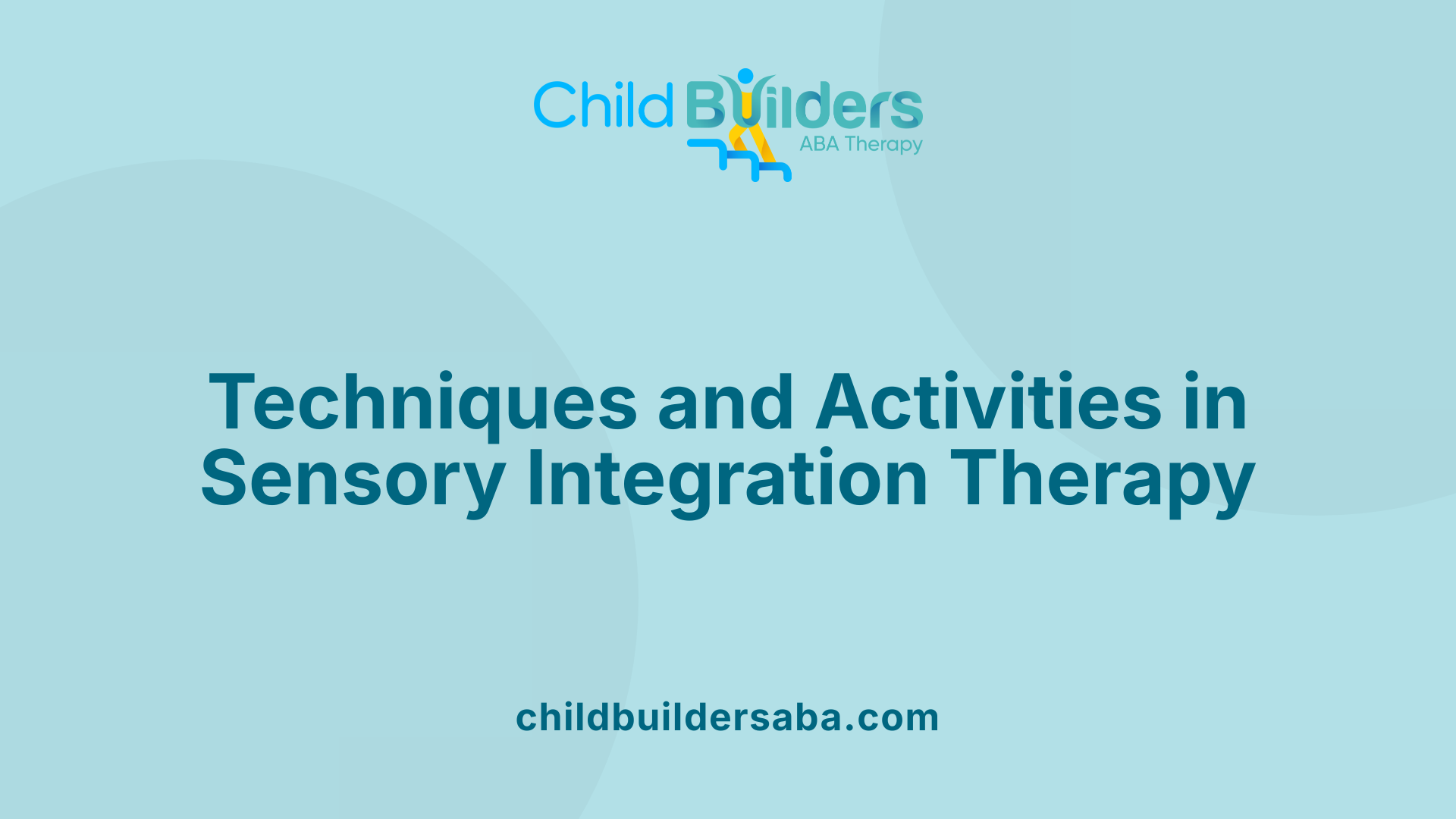 Sensory integration therapy employs a variety of play-based interventions to help children and adults better process sensory stimuli. Therapists incorporate activities such as swinging, bouncing, crawling, and climbing to engage the vestibular and proprioceptive systems, which are vital for balance, coordination, and body awareness.
Sensory integration therapy employs a variety of play-based interventions to help children and adults better process sensory stimuli. Therapists incorporate activities such as swinging, bouncing, crawling, and climbing to engage the vestibular and proprioceptive systems, which are vital for balance, coordination, and body awareness.
To target tactile processing, practitioners often use textured materials for exploration, brushing techniques, and tactile activities to improve discrimination and response to touch. Equipment like swings, trampolines, and textured mats are common tools that provide controlled sensory input.
The therapies are designed to stimulate multiple senses simultaneously. For example, swinging and spinning support vestibular development, while reaching for textured objects can refine tactile perception. Deep pressure techniques, such as weighted vests, blankets, or massages, are also integrated to calm over-sensitive nervous systems and promote a feeling of security.
Activities can include auditory exercises, such as sound filtering or listening to calming music, and visual activities like tracking games or visual-motor tasks. Some programs might incorporate olfactory and gustatory stimuli to address other sensory modalities.
Overall, the goal is to create a tailored sensory experience through playful, engaging activities that help individuals control and interpret sensory input effectively, improving their daily functioning, emotional regulation, and social skills.
Below is a summary of the sensory modalities targeted with common techniques:
| Technique Type | Examples | Targeted Sensory System |
|---|---|---|
| Play-based vestibular activities | Swinging, spinning, bouncing | Vestibular (balance and movement) |
| Tactile stimulation | Textured exploration, brushing, tactile toys | Tactile (touch and texture) |
| Deep pressure activities | Weighted vests, blankets, massages | Proprioceptive (body awareness), calming |
| Auditory exercises | Sound filtering, listening to music | Auditory (hearing and sound processing) |
| Visual activities | Tracking games, visual-motor tasks | Visual (vision and coordination) |
This diverse set of techniques is tailored to each individual’s sensory profile, aiming to improve integration, reduce sensitivities, and develop adaptive responses.
Goals, Effectiveness, and Research Evidence for Sensory Integration Therapy
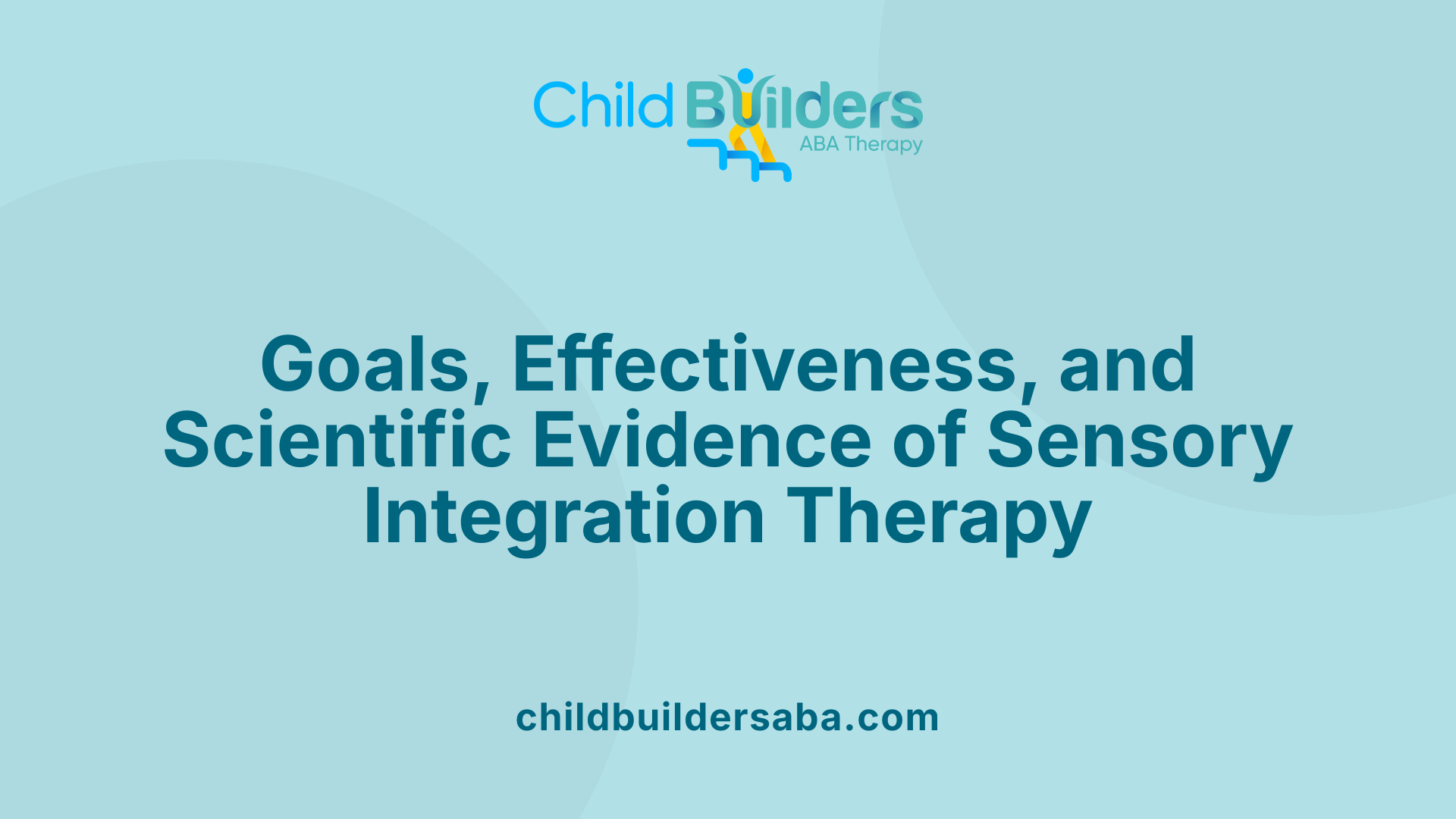
What are the goals of sensory integration therapy?
Sensory integration therapy aims to improve how children process sensory information, such as touch, movement, and balance. The main goals include enhancing sensory responses, promoting better self-regulation, and improving daily functioning.
This therapy helps children become more comfortable with sensory stimuli, which can reduce behavioral issues like over-reactivity or self-stimulation. It also seeks to support motor skills, coordination, and social interactions by helping children respond more adaptively to their environment.
How effective is sensory integration therapy in treating autism symptoms?
Research indicates that sensory integration therapy can offer benefits, particularly in motor development, sensory processing, and functional independence. For example, studies have shown improvements in gross and fine motor skills through targeted activities involving tactile, vestibular, and proprioceptive stimulation. In some cases, children demonstrated increased participation in daily tasks and better self-regulation.
However, the overall effectiveness of the therapy in addressing core autism symptoms — such as communication, social interaction, and behavioral challenges — remains uncertain. Most high-quality studies report limited or no significant differences compared to usual care. For instance, a recent large trial found no substantial improvements in problem behaviors like irritability or agitation at 6 or 12 months.
While some children show positive responses, others do not experience significant benefits. The variability might be due to differences in individual needs, therapy implementation, or study design. Therefore, sensory integration therapy can be helpful for some, but it is not universally effective.
What does current research say about high-quality evidence and systematic reviews?
Systematic reviews highlight that the scientific evidence supporting long-term, universal benefits of sensory integration therapy is inconclusive. Many reviews emphasize the need for more rigorous, well-designed research to establish clear efficacy.
Some recent studies, including randomized controlled trials, suggest that the therapy can improve specific skills, such as motor coordination and daily functioning, in children with autism. For example, a trial involving 138 children found improvements in goal attainment and reduced assistance needs, although it did not significantly change behavior problems.
The American Academy of Pediatrics and other health authorities recommend cautious optimism. They advise that sensory integration therapy should be considered a part of a comprehensive intervention plan tailored to individual needs, rather than a standalone cure.
In conclusion, while sensory integration therapy can benefit some children with autism, particularly in motor skills and sensory regulation, existing evidence does not firmly support its long-term or broad-spectrum efficacy. Ongoing research is essential to clarify which children are most likely to benefit and how best to implement the therapy.
| Study Focus | Main Findings | Limitations | Overall Impact |
|---|---|---|---|
| Motor & sensory skills | Significant improvements noted | Variability in individual response | Potential benefit in specific skill areas |
| Behavioral outcomes | No significant change in problem behaviors | Short follow-up periods | Limited evidence for core behavior change |
| Cost-effectiveness | Not cost-effective compared with usual care | Sample size and duration | Recommends careful consideration |
This evolving evidence underscores that sensory integration therapy might be useful as part of a broader, individualized treatment approach but should not replace other evidence-based interventions.
Suitable Candidates and Considerations Before Initiating Sensory Integration Therapy
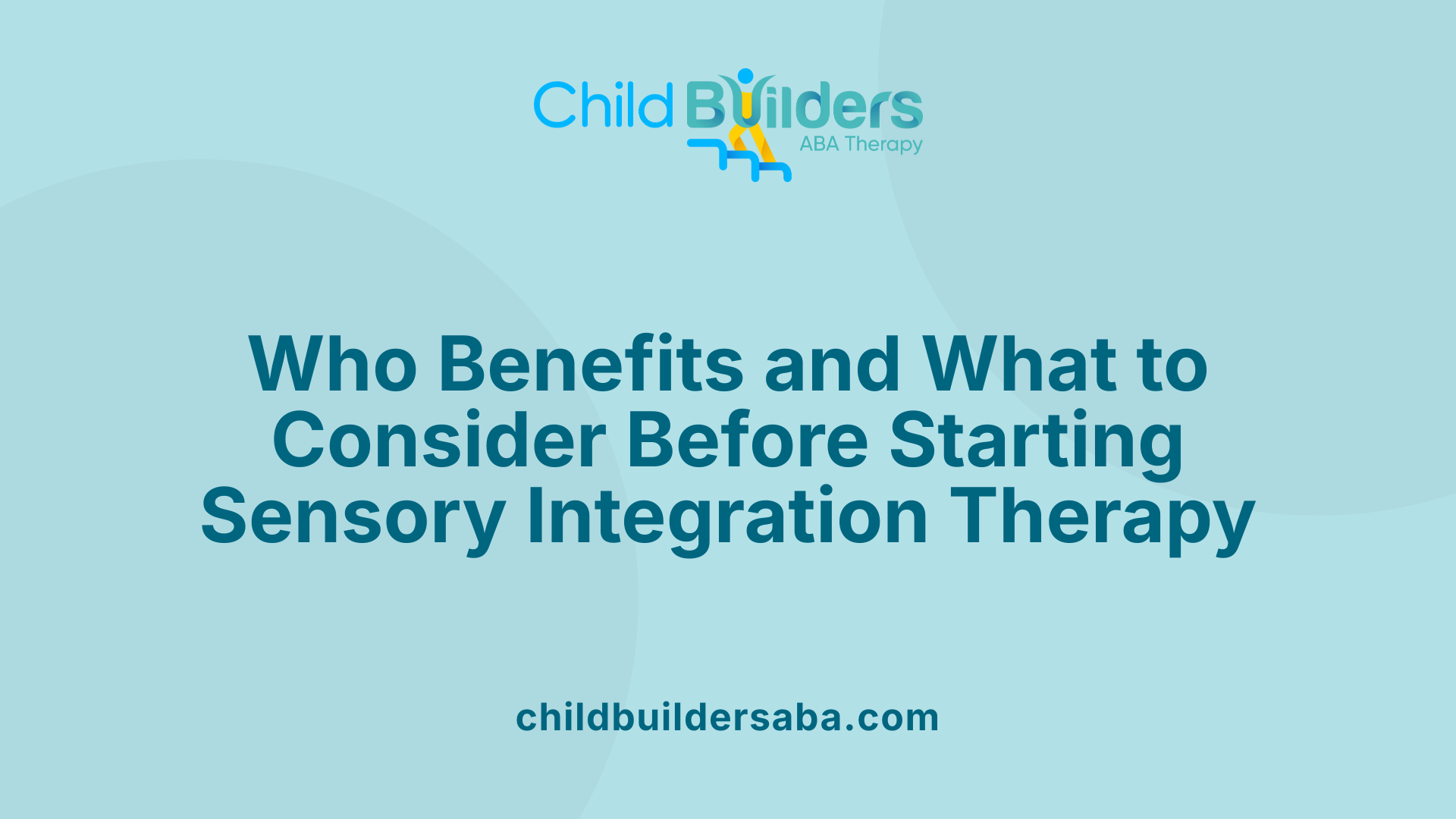
Who can benefit from sensory integration therapy and what factors are considered before using it?
Children with autism spectrum disorder (ASD) within the age range of 4 to 12 years often experience sensory processing difficulties. These challenges can manifest as over- or under-responsiveness to sensory stimuli, affecting their behavior, motor skills, and daily functioning.
Before recommending sensory integration therapy, it is essential to conduct thorough assessments. These evaluations include standardized sensory profiles, clinical observations, and tools like the Sensory Integration and Praxis Test (SIPT). Such assessments help identify specific sensory processing issues and guide targeted interventions.
Qualified occupational therapists trained in sensory integration play a vital role. They customize therapy activities based on each child's unique sensory profile, addressing components like sensory perception, motor control, and adaptive behavior.
The therapy is delivered with strict adherence to established protocols to ensure safety and maximize benefits. Clinicians also consider individual factors such as the severity of sensory issues, behavioral challenges, and family engagement, which influence treatment planning.
Overall, careful assessment, appropriate therapist qualifications, and individualized planning are crucial steps before initiating sensory integration therapy. These measures help determine whether the intervention aligns with the child's needs and ensure that the therapy provides meaningful support for sensory processing challenges.
The Future of Sensory Integration Therapy in Autism Care
While current research presents mixed findings regarding the long-term and universal effectiveness of sensory integration therapy for autism, it remains a widely used and valued intervention within multidisciplinary approaches. Advances in assessment tools, therapist training, and individualized treatment planning continue to refine its application. As ongoing research explores its mechanisms and outcomes, sensory integration therapy is poised to evolve, potentially offering more targeted benefits for children with sensory processing challenges. Integration with other therapies and a focus on family-centered, goal-oriented intervention are crucial for maximizing benefits. Ultimately, a nuanced understanding of its capabilities and limitations helps clinicians and families make informed decisions, ensuring that sensory integration remains a vital component in supporting the diverse needs of children with autism.
References
- Sensory Integration in Autism Spectrum Disorders
- Sensory integration therapy & autism | Raising Children Network
- Sensory integration therapy for children with autism and ... - PubMed
- Sensory-Based Therapies | Kennedy Krieger Institute
- Sensory Integration Therapy: How It Works, Effectiveness - Healthline
- Study finds sensory integration therapy benefits children with autism
- Sensory Integration Therapy - HealthyChildren.org
- What is Sensory Integration Therapy for Children with Autism?
- Exploring critical intervention features and trial processes in the ...



.jpg)

































































































